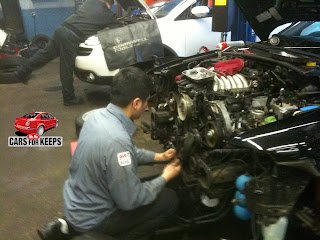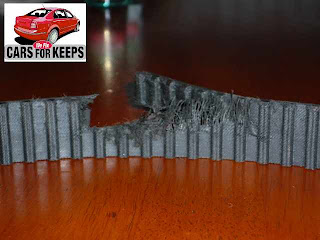 by Rob Hopp, Cars for Keeps Owner
by Rob Hopp, Cars for Keeps OwnerIn the typical car, mini-van or SUV, proper engine temperature control is critical to performance, gas mileage and - most important to car owners - heat.
If you hold your fingers above the defrost vents with the temperature set on high, as a general rule, you can not leave your fingers there for very long without them getting pretty uncomfortable if the heating system is working well.
We usually check the heat output at the center vent; a good heater will put out 150 degree temps.
We have seen them run as high as 160°f. At 130°f degrees you may start getting a few complaints, though it’s still pretty livable, at 120°f people are getting unhappy, the coats are staying on and below 110°f NO ONE is happy.
Engineers spend a lot of time figuring out what temperature creates conditions for optimal combustion energy and get the cold engine to that temperature as quickly as possible. Optimum combustion squeezes the most btu's out of each squirt of gasoline at the lowest pollution levels. Burn gasoline and get heat. Combustion and the heat it generates must be contained. Metals surrounding the combustion absorb and transfer the heat to the cooling system liquid (antifreeze) which is the same liquid that runs through the little radiator in your dashboard which the fan transfers to your cold tootsies. So, if your vehicle's thermostat is fading or failed, the impact is much broader than just cold toes.
To learn more about how faulty thermostats can be diagnosed by monitoring your heater vent's output, try reading our previous blog post on diagnosing faulty car thermostats.
If you stop by Cars for Keeps with your Car, Mini-Van, Light Truck or SUV, we'll test the output for free!

















